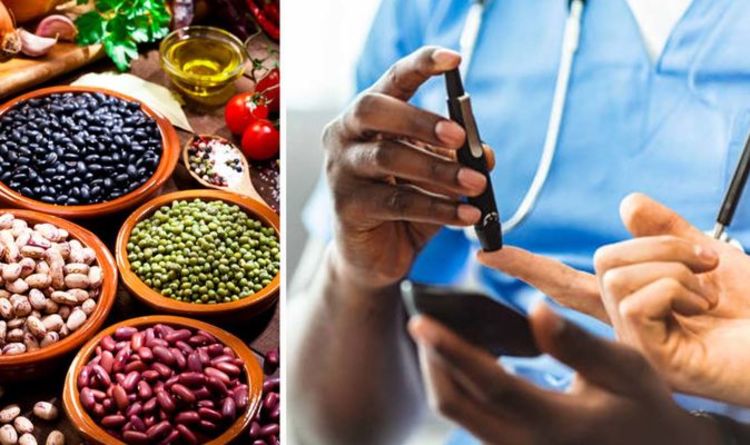Type 2 diabetes can be a 'devastating diagnosis' says expert
We use your sign-up to provide content in ways you’ve consented to and to improve our understanding of you. This may include adverts from us and 3rd parties based on our understanding. You can unsubscribe at any time. More info
Hyperglycaemia is the medical term for a high blood sugar level. The NHS notes that if you have diabetes, “no matter how careful you are, you’re likely to experience hyperglycaemia” at some point. It adds: “Occasional mild episodes are not usually a cause for concern and can be treated quite easily or may return to normal on their own.” Nonetheless, there are certain foods which are more appropriate than others.
The British Heart Foundation explains that sugar in the blood is also known as glucose, and is your body’s main source of energy.
“Glucose is carried through the bloodstream to cells around the body to give them energy to work. When there’s glucose in the bloodstream, the pancreas (an organ near the stomach) makes a hormone (a chemical messenger) called insulin. Insulin tells the body’s cells to absorb the glucose and use it as energy,” it says.
The charity adds: “In somebody with diabetes, their body can’t absorb glucose because there is a problem with their insulin.”
Diabetes.co.uk says: “The dietary advice generally given to people with type 1 diabetes is not much different to the dietary advice for people without diabetes.
“The main issues to consider are how sharply different foods are likely to impact on your blood glucose levels.”

Diabetes UK has outlined several reasons to “eat more pulses” including because they have a low glycemic index (GI).
The GI is a rating system for foods containing carbohydrates, and shows people how quickly each food affects your blood sugar.
The NHS explains: “Low GI foods, which cause your blood sugar levels to rise and fall slowly, may help you feel fuller for longer.
“This could help control your appetite and may be useful if you’re trying to lose weight.”
Nonetheless, the NHS notes that foods with a high GI are not necessarily unhealthy and not all foods with a low GI are healthy.
“For example, watermelon and parsnips are high GI foods, while chocolate cake has a lower GI value,” it says.
The health body adds: “Therefore, relying on GI alone is not a reliable way to decide whether foods or combinations of foods are healthy.”
Diabetes UK says that even though pulses contain carbohydrates, “they don’t give sharp rises to blood glucose levels compared to other carbohydrate-containing foods”.
The organisation explains: “The make-up of the carbohydrates in pulses, the fibre content and the fact that they are high in protein slows down the breakdown of the carbohydrates into glucose in the blood.
“Therefore, people with diabetes often find it doesn’t cause big spikes in their glucose levels, especially if the portions are not too big.
“For this reason, many people with diabetes who carb count are often advised not to count the carbohydrate in pulses, unless eaten in bigger quantities or they are part of a carbohydrate-containing pre-packed food which makes it difficult to isolate the carb from pulses.
“It is important to check with your diabetes team for specific advice on how to count the carbs in pulses as there is no one-size-fits-all approach to this.”

The NHS also says that pulses are a low-fat source of protein, fibre, vitamins and minerals, and count towards your recommended five daily portions of fruit and vegetables.
One portion is 80g, which is equivalent to around three heaped tablespoons of cooked pulses.
It also notes that pulses add fibre to your meal. “Eating a diet high in fibre is associated with a reduced risk of heart disease and type 2 diabetes,” it explains.
If you experience hyperglycaemia regularly, you should speak to your doctor or diabetes care team, according to the NHS.
Source: Read Full Article
